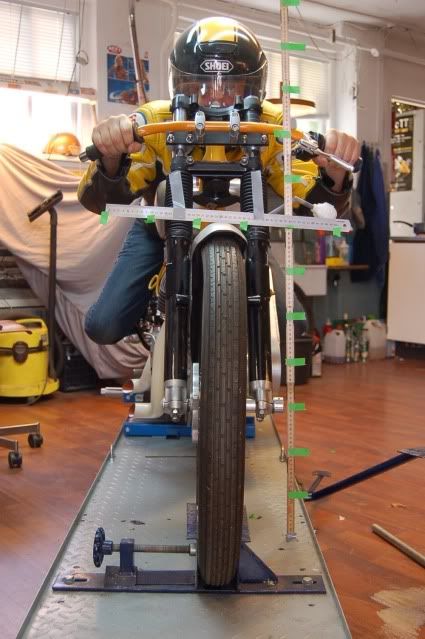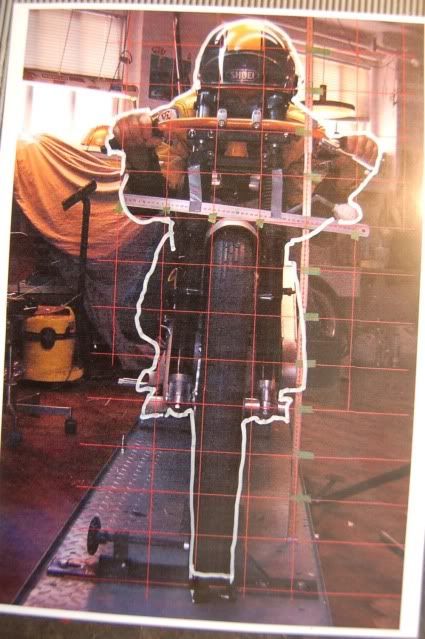Ahh, this is fun !
My bike:
SALT CRACKER INDIAN
I have no idea about my 'cd' so I've set it to 0.9
based on it being more than Willieworlds bike ( 0,8 ) judging from his avatar picture.
It's probably even more , with all this not-so-stream-lined blower crap hanging out there:

Willie; what did you base your cd on ?
...and do you have a full-size pic of your bike so I can compare ?
Thanks !
For calculating the frontal area I took a pic from the front
with markings for each 10 cm.
( The right leg will eventually come in further. Kick starter will be modified)

...then made a 10 x 10 cm grit
( Arms tucked in more, on this pic )

...and calculated the area.
That came to 0.3355 sq. meter ----> 3.605 sq. feet.
As the parts further back from the grit-line appears smaller than they are,
so I adjusted it up to 3.9 sq. feet
Still wondering why the figure is so much lower than Willie's ( 6.3 )

( Something must be wrong with my calculations ?)
cd----------------------.9
frontal area-------------3.9 sq. ft.
weight------------------539 lbs.
speed-------------------
100 mph
Horsepower needed....:
24.9...............
cd----------------------.9
frontal area-------------3.9 sq. ft.
weight------------------539 lbs.
speed-------------------
120 mph
Horsepower needed....:
42.3Wow; those extra 20mph takes a LOT of extra power.
I knew that , but didn't realize it took SO much